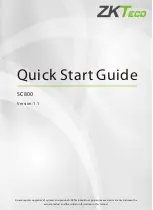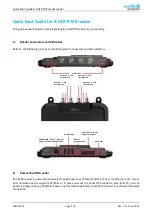
Diagnostics and maintenance
4.9 Maintenance
PROFINET with STEP 7
114
Function Manual, 05/2021, A5E03444486-AL
Compilation of the asset management record
You have various possibilities for compiling the asset management record for an I-device:
•
Recommendation: The Siemens Industry Online Support makes an application available to
you that helps you to compile the asset management record.
The data area of the asset management record is divided in two. The first part consists of
an automatically determined area that packages the IM0 data of the slots of the I-device
into an asset management block. The second part consists of the user-specific asset
management blocks. You configure the user-specific asset management blocks based on
pre-configured asset management record structures, fill them with information and make
them available to the application.
The application performs the following:
–
The application determines the required size of all the asset management blocks.
–
The application fills the data block in accordance with the specifications of an asset
management record with the automatically determined asset management blocks and
your user-specific asset management blocks.
–
The application makes this asset management record available to the higher-level
IO controller.
The application is described in this application example
https://support.industry.siemens.com/cs/ww/en/view/109748894
•
You create the asset management record yourself.
The following section describes how you can compile an asset management record for an
I-device yourself.
The concept assumes you yourself determine the I&M data for each centrally plugged
module and fill the asset management record with this information. The I&M0 data of a
module contains basic information about the module such as the manufacturer's code,
article number, serial number, hardware and firmware version. These are the data that are
also required in the AM record for an asset.
Determine the I&M data of centrally plugged modules
The central structure consists of an optionally plugged power supply unit (Slot 0), followed by
the I-device CPU (Slot 1), and then followed by the further modules, such as digital modules,
analog modules, etc. (as of Slot 2).
You determine the I&M data with the "Get_IM_Data" instruction for the plugged modules
with exception of the CPU:
To assign parameters for the "Get_IM_Data" instruction, you require the hardware identifier
(LADDR input parameter). You determine the hardware identifier for each occupied slot with
the "GEO2LOG" instruction (Determine hardware identifier from slot).
Summary of the theoretical steps:
1.
In a loop, determine the hardware identifiers of the plugged modules with the "GEO2LOG"
instruction.
2.
For each hardware identifier found, determine the I&M data by using the "Get_IM_Data"
instruction and store these data in a data block that you address with the input parameter
DATA. Use ARRAY of BYTE for the data storage. This corresponds to the description of the
AM record contents in the preceding section.
Summary of Contents for SIMATIC ET 200AL
Page 2: ......
Page 143: ......
Page 218: ......
Page 250: ......
Page 296: ......
Page 337: ......
Page 365: ......
Page 392: ......
Page 419: ......
Page 451: ......
Page 483: ......
Page 597: ......
Page 648: ......
Page 702: ......
Page 739: ......
Page 781: ......
Page 804: ......
Page 828: ......
Page 853: ......
Page 880: ......
Page 906: ......
Page 996: ...Diagnostics ...
Page 1121: ......
Page 1565: ......
















































